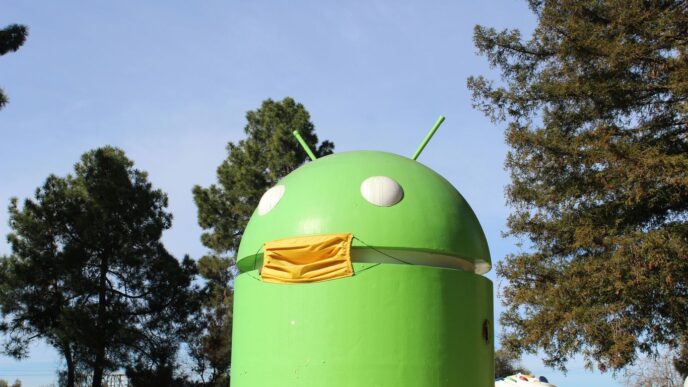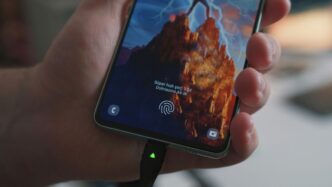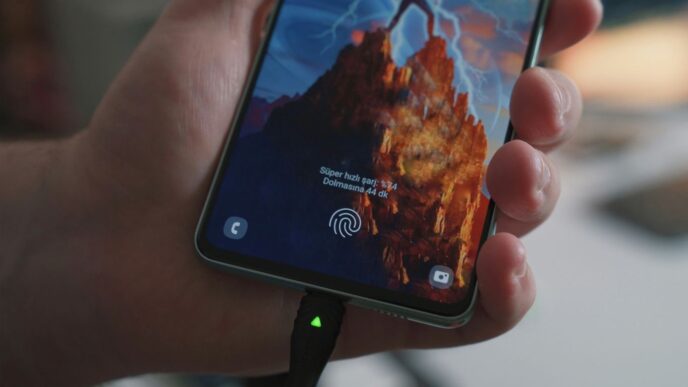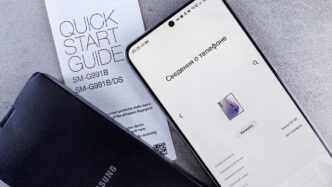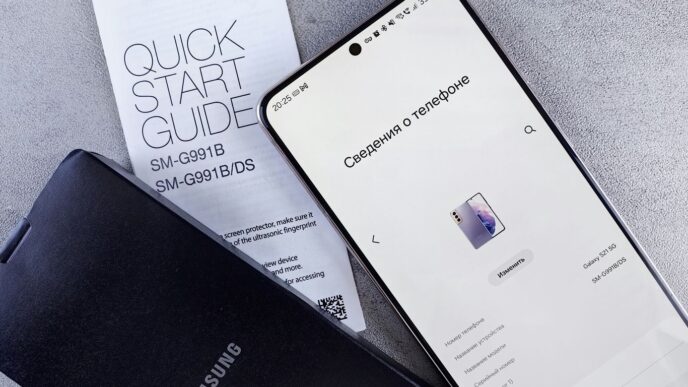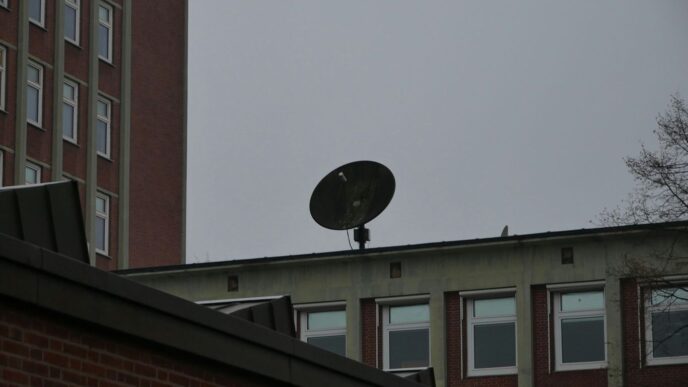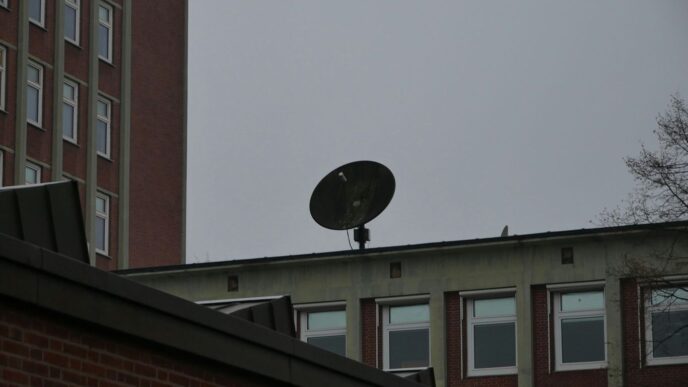Trying to pick the best cellphone services in 2025 can feel like a real headache. There are so many companies out there, each with their own plans, perks, and prices. Whether you’re looking for the fastest 5G, the lowest price, or just something that works in your area, it’s easy to get lost in all the options. This guide will break things down in plain English so you can find a plan that actually fits your life and budget, without all the tech jargon.
Key Takeaways
- Major carriers like Verizon, AT&T, and T-Mobile usually have the widest coverage, but MVNOs (smaller providers that use their networks) can save you a lot of money.
- Network coverage and reliability are still the most important factors—check coverage maps for where you live, work, and travel before picking a plan.
- Don’t get tricked by flashy perks; focus on what you actually use, like hotspot data, international calling, or family plan savings.
- Switching carriers is easier than it used to be, but timing matters—switch near your billing cycle’s end and keep your number by asking for a port-in.
- Phone compatibility is huge in 2025: make sure your device supports your provider’s 5G bands and that it’s unlocked if you want to switch easily.
Comparing the Top Providers for the Best Cellphone Services
Figuring out which cellphone company is right for you can be tricky—especially in 2025, when there are more options than ever. The big brands still dominate, but smaller ones aren’t far behind. Picking well means thinking about price, coverage, features, and what you need from a phone plan. Let’s break down exactly how these providers stack up.
Major Carriers Versus MVNOs
- Major carriers (Verizon, T-Mobile, and AT&T) own and operate their entire network of towers. They usually offer strong coverage, especially in rural and suburban areas.
- MVNOs (Mobile Virtual Network Operators) like Mint Mobile, Visible, Google Fi, Cricket, and Boost Mobile, don’t run their own networks. Instead, they rent network access from the big three. This makes their plans often cheaper, but performance may vary if the main network is busy, since MVNO customers get lower priority.
- When choosing between the two, consider whether you value lower costs or stronger, more consistent service.
Differences in Pricing and Plan Features
Pricing and what’s included can be all over the place. Some plans really do give you more for less, and others try to dazzle you with perks—here’s where they land:
| Provider | Single Line (Unlimited, Monthly) | Family (Per Line) | Hotspot Included | Taxes Included | Notes |
|---|---|---|---|---|---|
| Verizon | $65–$90 | $30–$55 | Yes (best plans) | No | Best for rural coverage |
| T-Mobile | $50–$105 | $28–$54 | Yes (most plans) | No | Fastest 5G speeds |
| AT&T | $51–$86 | $36–$51 | Yes (most plans) | No | Reliable, but pricey |
| Mint Mobile | $30 (12 mo) | $15 | Yes | No | Prepaid, lots of savings |
| Visible | $25–$45 | $25–$45 | Yes | Yes | All-online, simple plans |
| Cricket | $55–$60 | $25–$33 | Yes (top plan) | Yes | AT&T network, low hassle |
| Google Fi | $35–$65 | $23–$40 | Yes | Sometimes | Best for international |
| Boost Mobile | $25–$60 | $25 | Yes (top plan) | Yes (some) | Plans and network vary |
Prices and features change, so double-check before you sign up.
Key price points to think about:
- Most major carriers cost more but include more features and support.
- MVNOs usually mean big savings, but may not have as many extras or the quickest customer service.
Coverage and Network Quality Across Brands
When you pick a provider, it’s not just about the price—you want your phone to actually work where you need it most.
- Verizon is king for rural coverage and reliability, with a network that reaches nearly everyone—even in remote spots.
- T-Mobile leads in 5G speed and urban coverage, after big investments in new towers.
- AT&T sits in the middle: strong coverage and good reliability overall, but sometimes slower getting new tech rolling out.
- MVNOs mirror these networks. For instance, Mint Mobile uses T-Mobile’s, Visible uses Verizon’s, and Cricket uses AT&T’s. Still, sometimes your speeds are slower, especially when lots of people are online at once.
Checklist before picking:
- Check a coverage map for your home, work, and places you go often.
- Look up local reviews—sometimes people in your area can share how well a provider really works.
- Try a free trial if possible. Many providers give you a week to test things out.
So, when comparing carriers, the real question is: do you want more coverage and better speeds, or are you more interested in saving money? Your answer will point you to either a big-name provider or a scrappier MVNO.
Understanding Network Coverage and Reliability
You want your phone to work wherever you go, right? Network coverage and reliability are not just nice to have—they’re what makes the difference between keeping in touch and missing calls entirely. Every provider claims to have the best service, but what’s really happening under the hood? Let’s break down what matters most in 2025.
Evaluating 5G Availability and Speed
5G isn’t a tech buzzword anymore; it’s the new normal. But not all 5G is created equal—coverage, speed, and access can vary a lot by carrier and location.
Here’s a quick look at how the big networks stack up for 5G coverage and speed:
| Carrier | 5G Coverage | Average 5G Speed (Mbps) | Notable Points |
|---|---|---|---|
| Verizon | 280M+ people | ~185 | Ultra Wideband in cities |
| T-Mobile | 332M people | ~243 | Most land area, fastest speeds |
| AT&T | 295M+ people | ~133 | Fast 5G+, wide coverage |
- T-Mobile leads in land area and raw speed, which you’ll notice in more places.
- Verizon focuses on reliability and has strong rural coverage and ultra-fast city hotspots.
- AT&T sits in the middle, with consistent, wide-reaching service across cities and suburbia.
What does this mean for you? Go beyond the ads—actually run a speed test or borrow someone’s phone on the network you want to try.
Rural Versus Urban Service Performance
Where you live or spend most of your time hugely impacts your experience. You can’t assume a carrier that works great in Manhattan will be just as good in rural Montana.
- In cities, all major networks usually perform well. 5G speeds are highest and you get all the latest features.
- Suburbs and small towns typically get reliable 4G and decent 5G, but speeds may lag behind city cores.
- Rural areas: Verizon and AT&T still win here with broader coverage, but T-Mobile has made strides—especially along major highways and towns.
- MVNOs (smaller cell providers like Mint Mobile or Visible) piggyback on these big networks. You’ll get the same coverage, but during busy times, you might get slowed down if network traffic spikes.
If you split time between city and country, check coverage maps for both before making any move.
How Deprioritization Affects Your Experience
Ever notice your data suddenly gets slow, even when you’ve barely used any? That could be deprioritization—a term carriers use if they decide your connection is less important than someone else’s.
How does it work?
- Mainline customers (people who pay the most or use premium plans) get "first dibs" on the network.
- MVNO or budget-plan users can get slowed down whenever the network is busy, no matter how little data they’ve used that month.
- Many unlimited plans sound great until you read the fine print: you might get high-speed data only up to a certain limit, then get slowed during peak times.
Pay attention to these patterns:
- Are you often in crowded areas (stadiums, airports, city centers)? Expect more deprioritization.
- Plan type matters: Premium or “plus” plans usually come with higher priority. Budget or MVNO plans take a back seat during network crunch times.
- If you work from home or spend time in a busy city, check how your network handles congestion—ask friends or try a free trial if possible.
In other words, network coverage stats are great, but your real-world speed can drop just when you need your phone most. Double-check the details before you commit.
Features That Set the Best Cellphone Services Apart

When you’re on the hunt for a cellphone service in 2025, the little extras can make a huge difference. Not all plans offer the same perks, so it pays to know what’s out there before you decide. You’ll see a lot of buzzwords like “hotspot,” “international options,” and “loyalty perks,” but what do these actually look like in real life? Let’s break down the features that truly separate the top services from the rest.
Hotspot and Tethering Options
Hotspot features have become pretty standard, but there’s a big difference in how much data you get and what’s allowed. Some plans cap your hotspot speed, others limit how much you can use.
| Provider | Hotspot Data Included | Speed Limits | Notes |
|---|---|---|---|
| Verizon Ultimate | 60GB | Full Speed, then 3Mbps | Priciest option |
| T-Mobile Experience Beyond | 50GB | Full Speed | Reliable in urban areas |
| Visible | Unlimited (5Mbps) | 5Mbps (all plans) | Simple rules |
| Mint Mobile | 10GB | Full Speed, then stop | Annual plans required |
| AT&T Premium | 50GB | Full Speed | Includes security tools |
Quick tips:
- If you work remotely or stream a lot, look for 50GB or more.
- Cheaper plans often mean lower hotspot limits or speed caps.
- Visible stands out for unlimited usage, but it’s slower than others listed here.
International Calling and Roaming
Traveling outside the US? Before booking a flight, check your plan’s international features. Most basic plans only work in North America, but some services make calling or roaming abroad painless—and much cheaper.
Key things to look for:
- Free global data and texting: Providers like Google Fi Premium let you use your plan’s data in 200+ countries at no extra cost.
- Daily roaming passes: Verizon and AT&T offer day passes abroad, about $10/day, that let you use your plan normally.
- Included countries: T-Mobile Experience Beyond covers Mexico and Canada with no extra roaming fees, plus affordable international call add-ons.
If you jet-set a lot, check out Google Fi’s international coverage to see if it fits your needs.
Included Perks and Loyalty Rewards
Not every cellphone service is just talk, text, and data. Many plans throw in bonuses to keep you happy (and loyal).
Common extras you may find:
- Free streaming subscriptions (Netflix, Apple Music, Disney+)
- Complimentary cloud storage
- Early device upgrade options
- Cashback or bill credits for long-term customers
- Priority customer support lines
Some carriers, like T-Mobile and Verizon, switch up perks every few months. These can add real value—especially if you were thinking of subscribing to these services anyway. It’s smart to add up what you get, because the best cellphone services in 2025 usually give more than just minutes and data.
All in all, weigh these extras against your real life. Some folks just need simple talk and text, others want every perk. No single feature wins for everyone, but knowing what’s possible helps you find a plan that’s actually worth it.
Tips to Maximize Value When Choosing a Cellphone Service
Everyone wants to get the most out of their cellphone plan, but it’s not always clear how to do that. The market keeps shifting, and there’s always some new promo or fee to watch for. Here’s how you can squeeze the most value from your service, in ways that actually matter for your wallet and your experience.
Switching at the Right Time
Timing your switch to another carrier can save you real money—and a whole lot of hassle. Here’s what to keep in mind:
- Try to change providers as close to your billing cycle’s end as possible. That way, you don’t pay for service you don’t use.
- Major holidays can mean slower customer support. If you plan to switch, avoid doing it over Christmas, New Year’s, or even long weekends.
- Don’t cancel your old plan until your number is fully working on the new service. Ask for a "port-in" process so you don’t lose your number in the middle of the change.
Bundling and Multi-Line Discounts
If you’ve got family, roommates, or even just a partner, look at multi-line plans. They often work out cheaper per line than individual plans. Some carriers also knock off a few dollars when you bundle phone service with home internet or TV.
Here’s a quick look at typical savings for family or multi-line plans on popular carriers:
| Lines | Typical Per Line (Major Carrier) | Typical Per Line (MVNO) |
|---|---|---|
| 1 | $65 | $25-$40 |
| 2 | $55 | $22-$35 |
| 4 | $40 | $17-$30 |
It gets cheaper the more lines you add. That’s why if you can coordinate a family account, the savings can stack up.
Spotting Promotional Deals and Extras
Carriers roll out new deals all the time. Some are decent, some are just a gimmick. To catch the good ones:
- Check for limited-time promotions—especially during back-to-school, Black Friday, and spring sale periods.
- Watch out for offers like free streaming subscriptions, shopping gift cards, or bonus data for the first few months.
- Always ask if there are discounts for students, military, seniors, or through your employer.
One last thing: make sure you look for hidden fees. Promotional prices often jump after six or twelve months, so mark your calendar to review your plan before prices go up.
If you stay alert to timing, line discounts, and current promotions, you’ll wind up with better service for less. Getting the best value might take a bit of research, but your budget will thank you in the long run.
Picking the Right Plan for Your Needs and Budget
Choosing the best cell phone plan in 2025 isn’t about picking whatever’s trending—it’s about matching your habits and budget. The best plan for one person can be a disaster for someone else, especially if your data needs or family size are wildly different. Here’s a rundown to help you fit the right plan to your day-to-day life without overpaying or dealing with surprise fees later.
Single Line Versus Family Plans
It’s easy to stick with whatever you’ve used in the past—even if it’s not the smartest option anymore.
- Single-line plans are often cheapest with MVNOs (like Mint Mobile or Tello Mobile), perfect if you live solo or don’t want any group commitments.
- Family and multi-line plans usually save money when you need two or more lines, and major carriers start looking a lot more competitive here.
- If you’re coordinating a family or group, take stock of everyone’s average data use, calling needs, and whether they ever travel internationally. One big data-eater can wreck the math if the plan isn’t truly unlimited.
Understanding Data Limits and Speeds
No one likes to hit a sudden slow-down or pay trash fees for data overages. Start by tracking your normal monthly usage over a couple of cycles—most phones let you check this in the settings menu.
| Data Need (per month) | Plan Type Recommendation | Cheapest Option |
|---|---|---|
| Less than 5GB | Limited-data plan | $5-20/mo (Tello, Mint Mobile) |
| 5-15GB | Mid-tier plan | $20-40/mo (US Mobile) |
| 15GB or higher | Unlimited data plans | $25-60/mo (Visible, Cricket) |
- Unlimited plans are tempting, but only pay extra if you truly need it. Streaming and gaming? Go unlimited. Just calls and messaging? Limited data will save you cash.
- Watch for deprioritization—cheaper plans often slow your speeds if the network gets crowded.
Evaluating Prepaid Versus Postpaid Options
Prepaid options are way more popular now. You pay upfront, there’s no contract, and you skip the stress of surprise fees.
- Prepaid: Great for flexibility, no contracts, usually cheaper for single lines or couples. Many MVNOs do this and may have excellent promos, especially for new users.
- Postpaid: Monthly billing, perks (like streaming or cloud storage), sometimes required if you want to finance a brand-new phone. Better for larger families or if you’re deep into a carrier’s ecosystem.
Here’s a quick summary of the differences:
| Plan Type | Flexibility | Cost | Contract Required | Perks/Extras |
|---|---|---|---|---|
| Prepaid | Very Flexible | Usually lower | No | Basic or pay-per-use |
| Postpaid | Moderate-Low | Often higher | Often yes | Premium (streaming, perks) |
If you’re thinking about upgrading your phone along with your plan, don’t rush. There’s a whole debate about how often you really need a new device, and there are strong arguments for waiting to upgrade until your needs change or your phone is truly outdated.
To recap:
- Take time to map your real usage: data, calling, and travel habits.
- Compare single-line with family plans; don’t just default to what you’ve always had.
- Decide if you prefer the no-strings approach of prepaid, or need the perks of postpaid.
Finding the right plan is a bit of a puzzle, but spending a little time upfront can save you hundreds each year. Remember to always read the fine print—promos come and go, and hidden fees can add up fast.
Phone Compatibility and Choosing the Right Device

So you’ve picked a new cellphone plan—now it’s time to make sure your phone is actually going to work with it. There are a handful of things people miss when switching providers, especially since not every device works everywhere in 2025. Let’s break down what you need to know so you can avoid any frustrating surprises.
Unlocked Phones Versus Carrier Devices
The easiest way to have freedom with your cellphone service is to use an unlocked phone. Unlocked phones work with any carrier that supports their network, while carrier-locked phones are restricted to one provider until they’re officially unlocked. Here’s what to keep in mind:
- If you bought your device on a payment plan, it’s probably locked until paid off.
- Carriers must unlock your fully paid device if you ask (though some may take 24-48 hours).
- Major brands (Apple, Samsung, Google) typically ensure their unlocked models work with all US carriers.
5G Phone Requirements for 2025
5G is everywhere now, but not all 5G is the same. Your device needs to match the network tech your carrier uses. Otherwise, you might get stuck with slow speeds—or worse, no service.
- There’s low-band, mid-band, and mmWave 5G. The more bands your phone supports, the better your coverage and speed will be.
- In 2025, nearly all new phones over $250 support nationwide 5G, but budget models can still cut corners on which bands they support.
| Carrier | Key 5G Bands in 2025 | Works With Most Unlocked Phones? |
|---|---|---|
| Verizon | n2, n5, n77, n260, n261 | Usually, must check specific model |
| T-Mobile | n71, n41, n258, n260, n261 | Yes, for unlocked or TMO-specific |
| AT&T | n2, n5, n77, n260 | Most major models, check band |
Rule of thumb: Check your future carrier’s website for their band support list and then double-check your phone’s spec sheet. Sometimes, even expensive imported models miss critical US 5G bands.
Ensuring Compatibility With Your Chosen Provider
Before you drop money on a new plan—or a new phone—make sure your device is actually going to work. Here’s what to do:
- Find your IMEI number (Dial *#06# on your phone).
- Go to the website of the carrier you want to join. There will be a ‘Check Compatibility’ tool. Paste your IMEI there.
- Check that your phone will get 5G, not just LTE. Some old phones only get basic service.
- If your phone is locked, request an unlock from your current carrier (make sure it’s paid off first).
Tips:
- Older phones from, say, 2020 or earlier may only get basic coverage, even if they’re technically compatible. You’ll miss out on fast 5G.
- Brands like OnePlus, Motorola, and Xiaomi sometimes make variants for different countries—double-check US compatibility if you’re buying online.
When in doubt, don’t trust a random online seller’s promise—use the carrier’s official checker. It’ll save you hassle if you need support later on.
Bottom line? Picking a plan and a device isn’t just about the monthly bill. It’s about making sure your tech is ready for the service you actually want to use—otherwise, you’re stuck paying for features you can’t even access.
Assessing Customer Support and User Experience
Customer support used to mean calling a helpline and waiting for an hour with elevator music blaring in your ear. In 2025, things are better (sort of)—just not always in the ways you’d think. Having help when your service glitches or your bill looks off can turn an annoying moment into just a small bump. Your experience dealing with a carrier can make or break how you feel about your cellphone service, so it pays to look closer at a provider’s track record before signing up.
Online-Only Versus In-Store Service
Not all carriers handle customer service the same way. Some are fully online, others have brick-and-mortar stores, and a few do both. Here’s what to weigh:
- Online-Only Carriers: These brands—think Google Fi and Visible—usually offer customer support by chat, email, or a help site. It’s fast for simple issues but can be a nightmare if your problem’s complicated or you need a new phone in a pinch.
- In-Store Service: Major carriers like AT&T and T-Mobile have shops in most big towns. Stores are handy if you prefer face-to-face help, need to swap devices, or want your questions answered on the spot.
- Hybrid Approaches: Some budget brands have limited store partnerships—enough to offer basic help, but not everywhere.
Choosing what fits your style can save headaches later. If you get frustrated typing out your issue on a tiny phone keyboard, a carrier with stores might be better for you. By the way, for those using Android devices, you might find more options with Android’s customizability and compatibility than with iOS-only carriers or stores (wide device compatibility).
Customer Ratings and Reviews
How do people really feel about their carrier’s support? Actual customers have plenty to say. Companies are rated on several categories each year:
| Carrier | Customer Service | Store Experience | Overall Score (100) |
|---|---|---|---|
| T-Mobile | Best (837) | Best (832) | 77 |
| AT&T | Average (819) | Average (819) | 78 |
| Mint Mobile | Very High (857) | N/A (No Stores) | 83 |
| Visible | Good (821) | N/A (No Stores) | N/A |
| Cricket | Good (832) | Good (847) | 77 |
| Verizon | Avg (819) | Avg (819) | 74 |
From the table, notice Mint Mobile gets top marks, but offers help only online, so it’s not great if you need in-person support. Meanwhile, T-Mobile gets high marks across the board, thanks mostly to helpful staff and easy in-store fixes. AT&T and Verizon offer in-person support, but customers mention slow responses and some billing headaches.
Getting Help With Activation and Billing
This is where carriers set themselves apart. New phones and number transfers can go smoothly, or you can end up spending a whole afternoon re-explaining your problem. Here’s how to avoid the worst outcomes:
- Check online resources first. Many issues are solved fastest through carrier websites or apps. Most have guides for setup, billing questions, and even troubleshooting.
- Contact via chat for quick questions. For simple stuff (“Where’s my bill?”), online chat support is usually quick.
- Go in-store for device swaps and tricky problems. If your phone won’t activate or your SIM is busted, a store visit beats waiting for a replacement in the mail by days.
- Keep records. Make notes on who you spoke to, what was promised, and save any chat transcripts. Carriers sometimes lose track.
- Monitor billing. Set up alerts or check your account every month—billing errors still happen more than they should.
Customer support isn’t exciting until you need it, and then it’s all you care about. If you value quick answers and prefer talking to real people, or want better options for device setup, these factors can tell you which carrier will be the least hassle when things go sideways.
Conclusion
Picking a cell phone plan in 2025 can feel like a chore, but it doesn’t have to be. There are more choices than ever, and the right one really depends on what you need most—coverage, speed, price, or maybe just something simple that works. Don’t forget to check if your phone will work with the new carrier, and always double-check the fine print for things like taxes or extra fees. Plans and deals change all the time, so it’s smart to look around every year or so. If your current carrier isn’t cutting it, don’t be afraid to try something new. At the end of the day, the best plan is the one that fits your life and your budget. Good luck, and happy phone hunting!
Frequently Asked Questions
How do I keep my current phone number when switching carriers?
To keep your phone number, ask your new carrier to “port in” your number. Don’t cancel your old service before the switch. The new company will move your number for you. This makes sure you don’t lose your number during the change.
When is the best time to switch cellphone services?
Try to switch near the end of your billing cycle so you don’t pay for days you won’t use. Avoid switching during major holidays since customer service can be slower. Keep your old service active until your new one is working.
What’s the difference between major carriers and MVNOs?
Major carriers like Verizon, AT&T, and T-Mobile own their own networks. MVNOs are smaller companies that rent space on these big networks. MVNOs often have lower prices but may not offer all the same features or support.
How do I know if a plan is right for my area?
Check the coverage map on the carrier’s website. If you live in a city, most carriers will work fine. If you live in a rural area, Verizon or AT&T usually have better coverage. Ask friends or neighbors which service works best for them, too.
Should I choose a prepaid or postpaid plan?
Prepaid plans are paid for before you use them and are good if you want to control spending. Postpaid plans are billed at the end of the month and may offer more features or perks. Pick the one that fits your budget and needs.
Can I use any phone with any carrier?
Not every phone works with every carrier. Unlocked phones can be used on most networks, but you should check if your phone supports the right bands for 5G or 4G. Ask the carrier or check their website to make sure your phone will work.






